Holy day of obligation on Aug. 15
“At the conclusion of Her earthly life, the Mother of Christ was raised in soul and body to Heaven, that is, in the glory of eternal life, in the full communion with God,” said Pope Francis when describing why on Aug. 15 the Church celebrates one of the most important feasts dedicated to the Blessed Virgin Mary: the Solemnity of Her Assumption.
The Catechism of the Catholic Church describes the Assumption as follows: “The Immaculate Virgin, when the course of her earthly life was finished, was taken up body and soul into heavenly glory, and exalted by the Lord as Queen over all things, so that she might be more fully conformed to her Son, the Lord of lords and conqueror of death.”
Bishop Frank J. Dewane stated, “Since death and the corruption of the human body are consequences of sin, it would not be right that the Virgin Mary – who is free from sin – should be affected by this natural law. It is a privilege granted to Mary, and closely connected to her being the Mother of Jesus.”

Pope Francis said that “Mary’s Assumption is a great mystery that concerns each one of us; it concerns our future. Mary, in fact, precedes us on the way in which all those go that, through baptism, have bound their life to Jesus, as Mary bound her life to Him. (This) Feast pre-announces the ‘new heavens and the new earth,’ with the risen Christ’s victory over death and the definitive defeat of the Evil One.”
While the Blessed Virgin has entered into heavenly glory, the Holy Father added that it does not mean that She is distant or detached from us. “The Assumption should bring eternal hope to the faithful… Mary is always there… She accompanies them, suffers with them, and sings of hope with them and brings victory over death.”
This Solemnity of the Assumption of the Blessed Virgin Mary is the oldest celebration of Our Lady. The original celebration, known as the “Memory of Mary” or “Falling Asleep of Mary” for it initially centered on the end of her earthly existence, is commonly known as her “dormition.”
Soon the name was changed to the “Assumption of Mary,” since there was much more to the feast than the end of her earthly life. The belief that Mary had been taken up, body and soul, into heaven dates back to the Apostles themselves.
Clear from the beginning was that there were no relics of Mary to be venerated, and that an empty tomb stood on the edge of Jerusalem near the site of the end of her earthly existence or dormition. That location also soon became a place of pilgrimage. (Today, the Benedictine Abbey of the Dormition of Mary stands on the spot.)
In 1950, Pope Pius XII proclaimed the Assumption of Mary a dogma of the Catholic Church, therefore, an ancient belief became Catholic Doctrine and the Assumption was declared a truth revealed by God.
The declaration of the dogma was to “make our belief in our own resurrection stronger and render it more effective,” Pope Pius XII stated in a proclamation.
The proclamation went on to say that the definition of the Assumption “will contribute in no small way to the advantage of human society, since it (reflects and builds up) the glory of the Most Blessed Trinity, to which the Blessed Mother of God is bound by such singular bonds.”
It was also expected that the faithful would be stirred up to a stronger piety toward their heavenly Mother and that those who meditate upon the glorious example Mary offers, be more convinced of the value of a human life entirely devoted to carrying out the heavenly Father’s will and to bringing good to others.
Pope Francis said that the current devotion the faithful throughout the world have toward the Blessed Virgin confirms the earlier expectations of Pope Pius XII. “We pray to Mary in a particular way, through the Rosary. This prayer brings us closer to the Blessed Mother and to her Son. We join in her suffering and her glory and rejoice looking to eternity and giving us hope that we, too, will follow Our Lady when our life is ended.”
All the feast days of Mary mark the great mysteries of her life and her part in the work of redemption. The central mystery of her life and person is her divine motherhood, celebrated both at Christmas and a week later (Jan. 1) on the Solemnity of Mary, Mother of God. The Immaculate Conception (Dec. 8) marks the preparation for that motherhood, so that she had the fullness of grace from the first moment of her existence, completely untouched by sin. The Assumption completes God’s work in her since it was not fitting that the flesh that had given life to God himself should ever undergo corruption.
Our Sunday Visitor contributed to this report.
Holy day of obligation
The Solemnity of the Assumption of the blessed Virgin Mary is a Holy Day of obligation this year. Holy days of obligation are feast days on which Catholics are required to attend Mass and to avoid (to the extent that they are able) servile work. The observance of Holy Days of Obligation is part of the Sunday Duty, the first of the Precepts of the Church. To accommodate this obligation, many Parishes throughout the Diocese offer vigils or extra Masses on the Solemnity. Every Sunday, the Lord’s Day, is recognized as a holy day of obligation and Catholics are bound to participate in Mass on Sunday or at an anticipated Mass on Saturday in the late afternoon or evening. In the United States, the following feasts are considered Holy Days of obligation: Mary, Mother of God (Jan. 1), Assumption of the Blessed Virgin Mary (Aug. 15), All Saints (Nov. 1), Immaculate Conception (Dec. 8), Nativity of the Lord Jesus (Christmas – Dec. 25). All Saints, Mary, Mother of God and the Assumption are not days of obligation if they fall on a Saturday or Monday.





